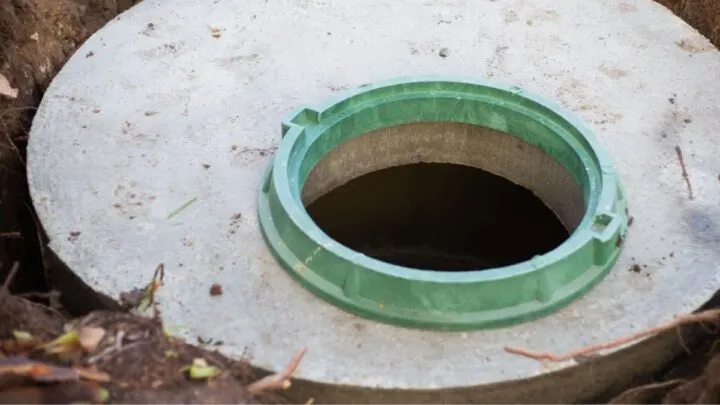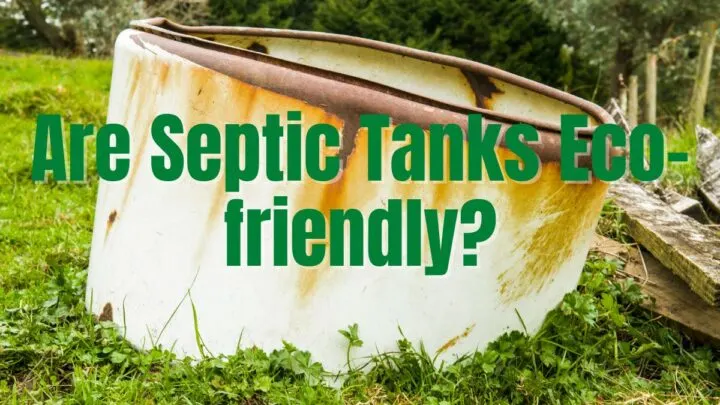Does the home you are currently looking to buy come with a septic tank? Have you ever had a septic tank in your home before?
Most people haven’t. They are used to doing their business and flushing it away, never to worry about it again.
But if you’re looking to live an eco-friendlier life, then sticking with the sewer system you’re used to is not the way to go.
Septic tanks are extremely eco-friendly. Not only are septic tanks better for the environment, but they also create less waste and put nutrients and water back into the soil as well.
It may cost more to maintain a septic tank, but the environmental benefits outweigh any maintenance or repair bills.
A well-built septic system with quality materials shouldn’t break or wear down for 20 to 40 years.
Do not write off a home that comes with the septic tank. You’ll be surprised at how easy it is to use a toilet shower or sink and maintain the system.
Are Septic Tanks Eco-Friendly?
Putting nutrients back into the soil and finishing the water table underneath the ground is integral to our environment.
It doesn’t matter if you’re in a city or in the suburbs or countryside, our daily life directly affects the health of the land we live on.
But for most people, they will never live in a house or rent a room in a home that is attached to a septic system.
Septic systems are more work than a sewer system, but it is far healthier for the land, vegetation, and the groundwater.
A sewer system does not replenish the groundwater with filtered water. It carries all of our human waste and used water all the way to a sewage treatment system.
Then the city must decide how to use the excess wastewater. But septic tanks are different.
After waste from the toilets, sinks, shower, or bathtub drains into the septic tank, it will actually go through the processing system.
The septic tank filters will separate the physical waste and toxic substances in the water.
Then, the filters will send the human waste into the septic tank while the filtered liquid drains into the groundwater via a series of tubes and pipes.
What’s the Difference Between a Sewer and A Septic tank?
Obviously, septic tanks are attached to a single home or a block of homes while a sewer system is connected to hundreds and thousands of homes.
Both the sewer system and the septic tank recycle, treat, and get rid of human waste, as well as anything else we disposed of in the toilet.
Are There High-End Eco-Friendly Septic Tanks Available Now?
Septic tanks have always been eco-friendly, but there are new eco-friendly septic tanks that are better than ever before.
New modern eco-friendly septic tanks are built with more advanced filtering systems to remove 99.99% of all toxic chemicals, substances, and liquids from the wastewater.
Some filtered wastewater goes back into the ground around the home and replenishes the vegetation from underneath the soil.
Plus, all the excess filtered water will go back into the ground table.
The filters in these modern advanced eco-friendly septic tanks are made with more natural substances.
It does not add any chemicals or substances into the water.

Pros and Cons of Using a Septic Tanks
If you’re thinking of buying your own home or just switching to a septic tank instead of keeping your current home sewer system, then keep on reading.
There are two major benefits and two major drawbacks of owning a septic system that you should know before you make your final decision.
Pros
- Less Expensive Than a Sewer System
If you’re building your own house in a brand-new lot of land, the city will have you paid to build part of the sewer line.
It can be quite expensive. But if you add your own septic tank instead of a sewer line, it will be much cheaper.
2. More Environmentally Friendly
As we stated above, septic tanks and septic systems improve the land and increase the groundwater.
With a septic system, you might not have to spend excess money watering your lawn.
Cons
1. Pumping the Septic Tank
Obviously, one of the biggest drawbacks of owning a septic system is pumping it.
Depending on the volume of the tank and the number of people using it daily, a septic tank has to be pumped every two to five years.
With a sewer system connection, you just have to flush the toilet and watch the water go down the sink.
Pumping a septic tank is not cheap either. It costs between from $300 to $1,000.
Along with pumping the tank, you will need to have to hire an inspector to come down and inspect your tank when it is empty.
If you don’t get your septic tank inspected, you could miss some of the less obvious signs of wear and damage.
Then, when the septic tank starts to fill up in a few months, the tank could crack and leak underneath the ground.
2. Septic Tanks Cannot Be Too Close to a Well
Unlike sources in pipelines, which can be placed anywhere as long as the ground is not too hard, septic systems may not be too close to public or private wells.
Filtered water from a septic tank is not safe to drink until it spends time in the ground. If a private well is too close to a person’s septic tank system, it could contaminate the water.
Conclusion to Septic Tanks Being Eco-Friendly
Septic tanks are extremely eco-friendly. But they do cost some money to maintain.
There are certain restrictions to follow if you want to keep one on your land. The average septic tank system lasts 20 years to 40 years.


